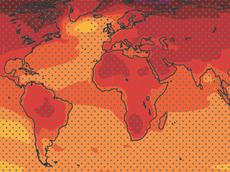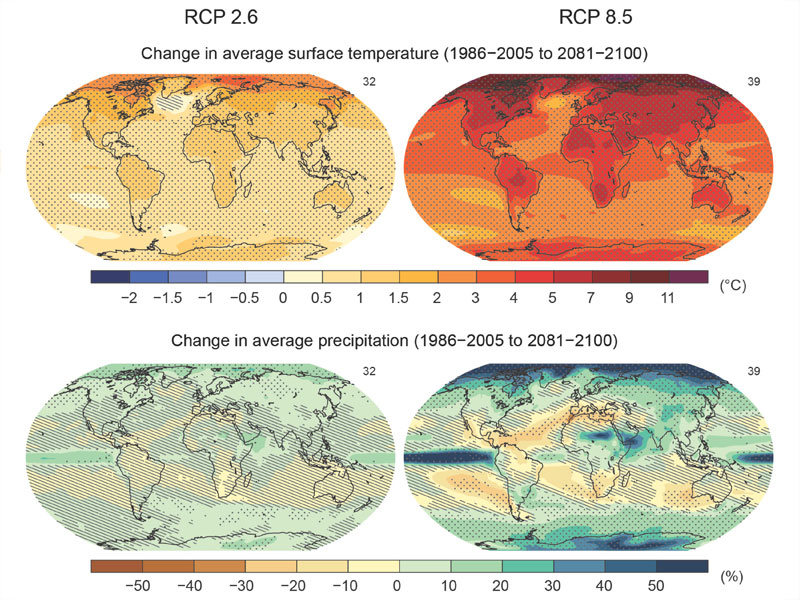We are running out of time
Several ETH scientists made significant contributions to a new IPCC climate report. It confirms the previous versions and warns more clearly than ever before that we are running out of time if we expect to achieve the 2-degree target.

The United Nations Intergovernmental Panel on Climate Change (IPCC) published the first part of its new assessment report on climate change on Friday. One of its most important results is that in the last few years, scientists have become even more certain that at least half of the observed global warming is caused by human activity. In the 2007 report, they stated that this was “very likely”; now the conclusion is that this is “extremely likely” with the probability increasing from 90 to 95 per cent. Another key finding is that the greenhouse gas CO2 remains in the atmosphere for several centuries. Humans have already emitted such a large amount of greenhouse gas that time is getting very short if we are still to be able to achieve the much-discussed 2-degree target (see also interview with ETH Professor Reto Knutti).
The report also confirms many findings from the previous report six years ago. The authors have become more certain of their statements as additional observed data is now available. Further, they are able to create a complete picture of certain individual areas of climate research that scientists previously understood only in a fragmented manner. By and large, there is little new in the report compared with the earlier version.
According to climate experts, this should be considered quite positive. “This continuity is an indication that we in climate research are working with sound fundamentals. It would be alarming if something different were to appear in each IPCC report,” comments Reto Knutti, Professor of Climate Physics. Further, he notes it is not the purpose of the report to put forward new, unpublished research results. The IPCC report represents a current scientific summary of existing knowledge. In the report, the authors incorporated the knowledge from more than 9,200 scientific publications.
Short term and local forecasts difficult
In earlier years the primary purpose of climate modelling was to create long-term, global climate forecasts, but an important focus during the last few years has been to make short term and local assertions. This is, however, much more difficult because the climate is subject to natural fluctuations, as the new report points out. “If you examine a timescale shorter than 15 or 20 years or small-scale dimensions, then natural fluctuations can hide climate change,” says Christoph Schär, Professor at the Institute for Atmospheric and Climate Science. In contrast, the longer the timescale and the larger the areas, the better we can balance out short-term outliers both upwards and downwards.
Thanks to improved models and a more exact understanding of the climate system, we can now better limit the effects of natural variability in climate change, adds Schär. In addition, new theoretical work means climate variability can be predicted to at least some degree. In future, it should thus be possible to close the gap between very short-term weather forecasts and long-term climate forecasts, and make assertions about the climate in the coming years. Such models, though, are not completely mature and thus the new IPCC report does not include any current short-term forecasts.
For the first time, the report includes an atlas in which temperature and precipitation climate maps are shown for all regions. This is possible because climate models are getting increasingly higher spatial resolution. “In the previous report, only two of 23 climate models used calculated their results with a resolution of less than 170 kilometres, whereas in the new report almost half of all models do so,” notes Schär.
ETH scientists make significant contribution
More than 800 scientists from around the world worked on the partial report dedicated to science and physics, which was published today. Researchers from ETH Zurich were prominently represented; for example, ETH professor Reto Knutti took responsibility as Coordinating Lead Author on the chapter addressing long-term forecasts of climate change. In addition to Christoph Schär, additional ETH professors as Lead Authors comprised Jürg Beer, Ulrike Lohmann, Konrad Steffen and Martin Wild. Another five ETH scientists – professors and scientists – collaborated as Contributing Authors.
The further partial reports, which address the impacts of climate change and possibilities for lessening its effects, will follow in March and April of next year. The synthesis report will be published in October 2014.
- “Emissions are long-term obligations”: ETH Professor Reto Knutti in an interview with ETH Life
- «Wolken und Aerosole sind weiterhin die grössten Unsicherheiten in Klimamodellen»: ETH Professor and IPCC Author Ulrike Lohmann in an ETH Klimablog post (German)
- "Polybahn Pitch" with ETH Professor Ulrike Lohmann (Video)








READER COMMENTS